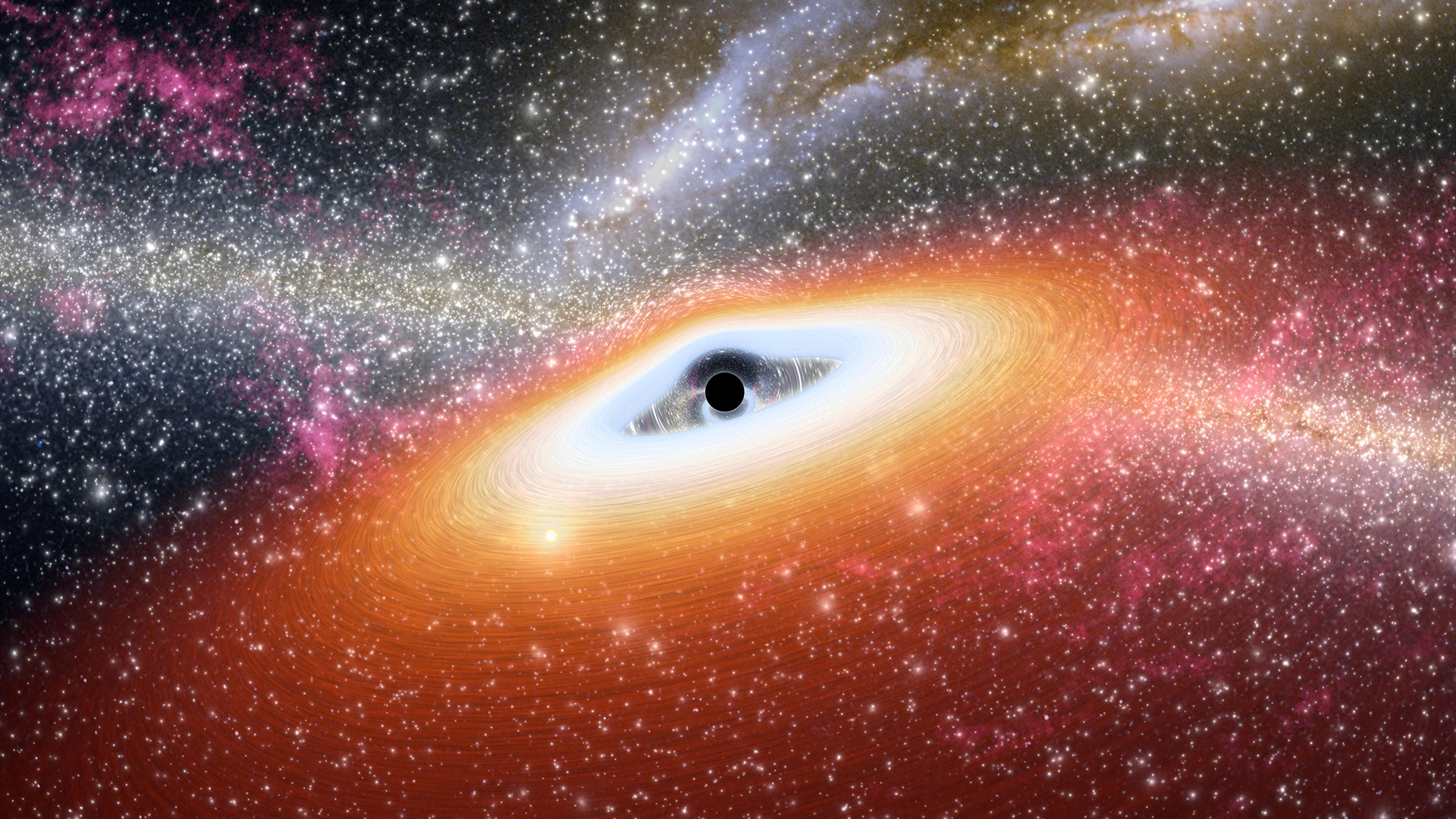Scientists may finally know where the biggest, oldest black holes in the universe came from
The presence of supermassive black holes in the earliest epochs of the universe has scientists stumped — but repeated explosions from tiny black holes may offer an explanation.

How do you build a giant black hole in the early universe? Start with the explosions of lots of little ones, a counterintuitive new preprint study proposes.
Numerous observations, especially with the James Webb Space Telescope (JWST), have revealed ironclad evidence that the young universe was populated by incredibly massive black holes. Although astronomers can't see the black holes directly, they do observe quasars — ultrabright objects powered by supermassive black holes. When material falls onto such a giant black hole, the material compresses and heats up, releasing an enormous amount of energy. Indeed, quasars stand as the most powerful engines in the entire universe, capable of outshining thousands of galaxies at once and lasting millions of years.
Astronomers can see these giant cosmic lighthouses from across the universe, including at the earliest times of star and galaxy formation. The oldest known quasar existed when our universe was only a few hundred million years old. The existence of old quasars means that supermassive black holes also had to exist, but this idea poses a challenge for our current understanding of galaxy growth. As far as we know, the only way to make black holes is through the deaths of massive stars. But these leave behind black holes with masses of only a few times that of the sun. To make a quasar, a black hole has to be at least a few million times the mass of the sun.
But the quasars are appearing so early in the cosmic record that there isn't enough time for the first stars to be born and die, and then allow their remnant black holes to merge and accumulate gas to grow to supermassive status.
To navigate this riddle, a team of astronomers at UCLA and the University of Tokyo proposes that perhaps tiny black holes helped the process. Their research appears in the preprint database arXiv, but it has not yet been submitted for peer review.
One potential way to build giant black holes in the early universe is to skip the whole star-formation bit and just allow huge clouds of hydrogen gas to collapse on their own directly into a black hole. To make a giant cloud of hydrogen collapse, you have to get rid of its heat. But cool hydrogen has an annoying habit of turning from free hydrogen atoms into diatomic hydrogen molecules.
Sign up for the Live Science daily newsletter now
Get the world’s most fascinating discoveries delivered straight to your inbox.
Hydrogen molecules are really good at cooling themselves off by emitting radiation. Too good, in fact. In the traditional scenario, before the atomic hydrogen gas cloud has a chance to collapse into a singular black hole, it fragments into many smaller pockets of molecular hydrogen, each of which collapses, forming a bunch of stars instead.
The trick is to get the giant cloud of hydrogen to cool off — but not so quickly that the whole thing becomes a single supermassive black hole. That's where tiny black holes come to the rescue, the new study theorizes.
The physics of the early universe within the first few seconds of the Big Bang are so intense that the cosmos may have directly produced innumerable small black holes that formed through the frothing and seething foam that was space-time itself. These small black holes don't live forever, though; they evaporate through the emission of Hawking radiation, and likely only a small fraction of them have survived to the present day.
But in that early epoch of the universe, the first stars, galaxies and black holes may have been much more abundant. As they evaporated, they emitted radiation, and the researchers discovered that these small black holes could release just the right amount of heat to keep a giant gas cloud from fragmenting into molecular hydrogen clumps, thus allowing the cloud to slowly and steadily collapse into a single giant black hole.
This result is interesting because it does not invoke even more exotic forms of energy release or the addition of new forces of nature. It also shows how even relatively straightforward physics can interact in strange and unfamiliar ways in the early universe.
The researchers hope to follow up their preliminary study with a more comprehensive simulation, to see if their model can produce the correct abundance of giant black holes in the early universe and to look for observational clues that telescopes such as JWST could use to validate this idea.

Paul M. Sutter is a research professor in astrophysics at SUNY Stony Brook University and the Flatiron Institute in New York City. He regularly appears on TV and podcasts, including "Ask a Spaceman." He is the author of two books, "Your Place in the Universe" and "How to Die in Space," and is a regular contributor to Space.com, Live Science, and more. Paul received his PhD in Physics from the University of Illinois at Urbana-Champaign in 2011, and spent three years at the Paris Institute of Astrophysics, followed by a research fellowship in Trieste, Italy.










